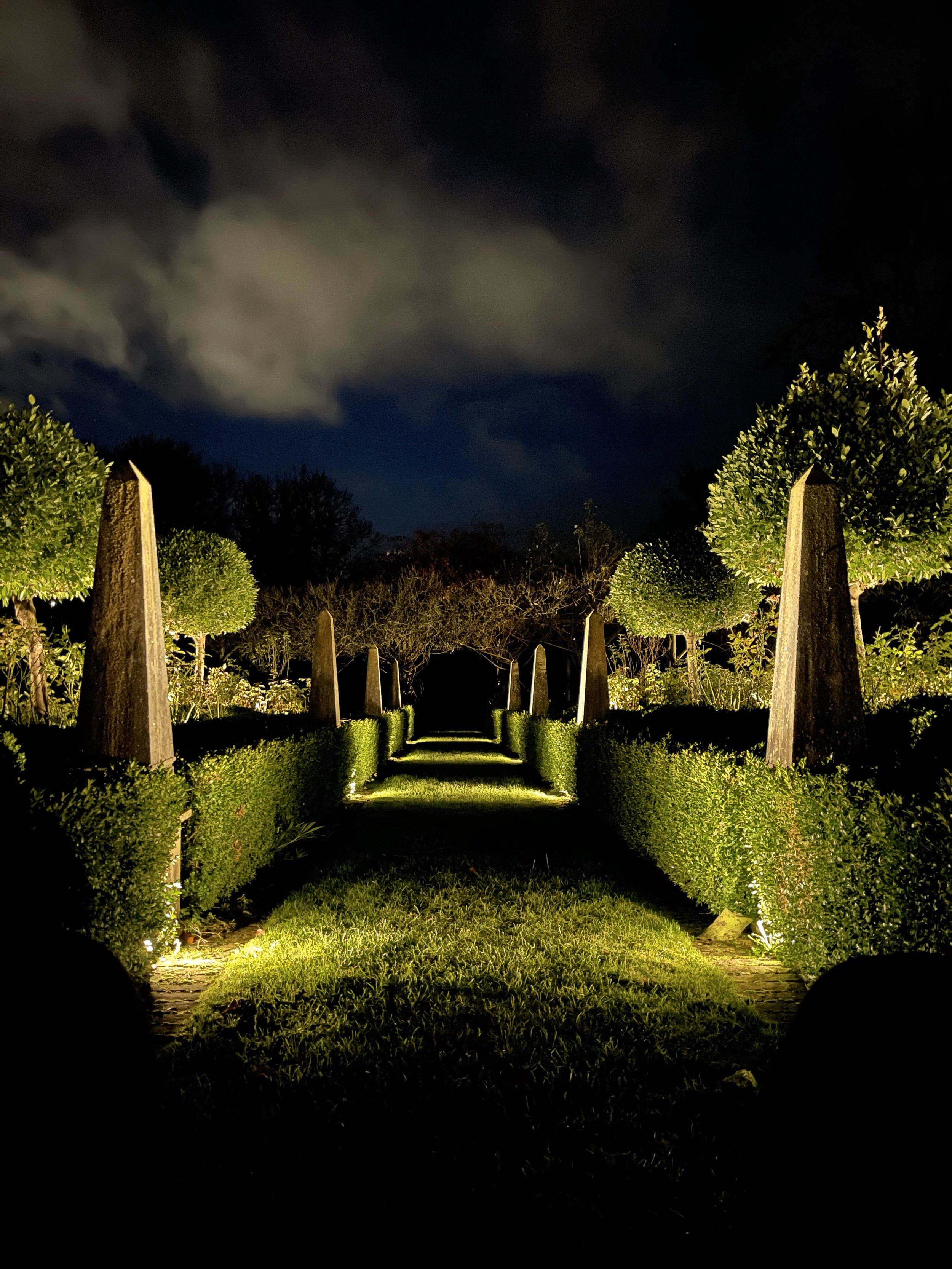Discovering Old Came Rectory: A Literary haven in Dorset
As day transitions into night, the gentle glow of the garden beckons, inviting contemplation and connection with the past. In this timeless sanctuary, where poetry and history intertwine, we are reminded that some stories are best told in the language of light and shadow, preserving the magic of the old while embracing the promise of the new.
Deep in the heart of Dorset, adjacent to Max Gate, the renowned former home of novelist Thomas Hardy, lies the Old Came Rectory. Once the residence of the famed English poet, churchman, and philologist William Barnes, this historic Grade II listed building stands as a testament to literary heritage and architectural elegance. Designed by the influential architect John Nash, the rectory boasts a meticulously restored estate encompassing orchards, woodlands, and a beautifully maintained walled garden.
It is within this enchanting walled garden that we had the privilege of designing and installing the lighting, adding a touch of magic to the already picturesque surroundings.
Adding to the already established charm of the garden was our primary aim. Unlike brand new gardens, this place holds a presence that can only come and grow with heritage. Our role in this modification had to be subtle and inviting, guiding visitors along a journey while preserving the garden's natural allure. This meant leaving some features in complete darkness to give the garden depth at night, enhancing its already incredible aura.
Our plan was to utilize reflected light in well-trodden areas, strategically highlighting the stems of trees and other features to softly disperse light back onto the paths while leaving the surrounding areas in total darkness.
We aimed to reveal hints of the garden's features instead of illuminating everything from the start. For example, only showing light at the tip of a chapel arch, hinting at its presence and encouraging curiosity. Inside, we softly lit the walls with lights close to the ground, flush with the surface, pointing upwards to highlight the imperfections and character in the walls.
Incorporating lighting into a garden of this age posed unique challenges. Unlike modern gardens where pathways for cables can be planned or materials easily replaced, the 300-year-old paving and brickwork here demanded utmost care to avoid any damage. We couldn't afford to disturb anything at all. Pathways had to be carefully completed under all brickwork to minimize visible cables, ensuring that the light appeared seamlessly integrated into the garden.
Any larger visible lights were coated with Corten, creating a rust effect to mimic age, thus maintaining the historic nature of the estate. This ensured that everything visible remained in harmony with the heritage of the surroundings.
As we conclude our journey through the enchanting Old Came Rectory, we are reminded of the delicate balance between preserving history and enhancing the present. Nestled amidst the rich literary landscape of Dorset, this historic estate, once home to William Barnes, continues to inspire with its timeless charm and natural beauty.
Our endeavor to illuminate the garden was not merely about adding light; it was about honoring the spirit of the place. By carefully weaving light through the ancient pathways and walled gardens, we aimed to reveal the garden's features gradually, inviting visitors to explore and uncover its hidden treasures.
The challenges of working with centuries-old materials only deepened our appreciation for the heritage of the estate. Every step was taken with reverence, ensuring that the integrity of the surroundings remained untouched.
Through the use of reflected light and careful placement, we sought to enhance the atmosphere while maintaining the historic character of the landscape. From the softly illuminated walls to the hints of light guiding the way, every element was designed to complement the natural beauty of Old Came Rectory.



